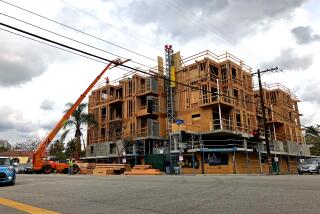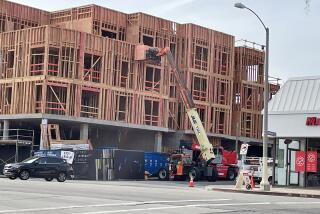Thousand Oaks to Consider Open Space Safeguards
- Share via
Seeking better safeguards to preserve the undeveloped lands around Thousand Oaks, the City Council has agreed to take a closer look at Councilwoman Linda Parks’ proposal to create urban boundary limits.
With no debate and little discussion, council members voted unanimously Tuesday night to identify an urban boundary line around Thousand Oaks that would discourage development from creeping into greenbelts and open spaces outside its borders. That technique is already used to prevent urban sprawl in San Luis Obispo and San Jose, among other California cities.
Parks argued the limit would keep Thousand Oaks from blending with neighboring Moorpark, Simi Valley and Camarillo, thereby ensuring that eastern Ventura County does not become a homogenous collection of shopping malls and housing tracts. The boundary, she said, would also make it difficult to annex land in Thousand Oaks’ sphere of influence into the city to be developed, something Parks opposes.
“This is a very successful way of stopping that urban sprawl, which is a big issue in the county right now,” Parks said.
Mayor Judy Lazar said she had no problem supporting Parks’ proposal, but argued it was not needed so much in Thousand Oaks as other parts of the county. Nevertheless, she said, it is worth pursuing if only to give Thousand Oaks residents additional assurance that their city will not grow out of control.
“I will support this, but I don’t think it’s critical,” Lazar said.
The next step, Parks said Wednesday, will be to define the actual boundary line. City officials will return to the council with definitions of urban boundaries, taken from the example of other cities, as well as potential suggestions for exactly where the boundaries should be located.
Parks wants to get the public involved in helping to define the boundaries.
*
“That is the critical step,” Parks said. “By delineating the areas we will not build into, we will help define our open spaces and greenbelts.”
Hallie Blau, a resident of Thousand Oaks’ North Ranch neighborhood, told the council Tuesday night that she supports Parks’ proposal.
“The council has an obligation to protect the greenbelts and open spaces that separate our city from neighboring communities,” Blau said.
Numerous California cities and growth-control groups have put together urban boundary limits in recent years. In San Jose, the City Council recently approved a boundary with a unanimous 11-0 vote.
The boundaries, which are usually set for 20 to 30 years, have more often been established by voters through the initiative process, but some growth-wary cities, such as San Luis Obispo, have drawn the boundaries on their own.
Planners in San Luis Obispo said the boundary limits, which are part of that city’s General Plan, have worked well to keep urban sprawl from spreading into unincorporated areas.
*
But they warned that cities can only control what occurs within their borders, and that county government could still allow development outside city borders that contradicts the concept of urban boundaries.
For instance, San Luis Obispo County recently allowed some land outside the urban boundary limit to be converted to industrial zoning, undermining the city’s efforts.
More to Read
Sign up for Essential California
The most important California stories and recommendations in your inbox every morning.
You may occasionally receive promotional content from the Los Angeles Times.









